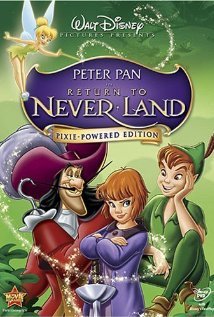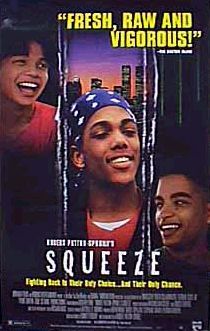“Redemptive Insight Into Urban Blight”

| None | Light | Moderate | Heavy | |
|---|---|---|---|---|
| Language | ||||
| Violence | ||||
| Sex | ||||
| Nudity |
What You Need To Know:
The film concludes with a redemptive ending which is both refreshing and original. This is an admirable example of grassroots community filmmaking which seeks to turn the horrific tide of drugs and crime which afflict American inner cities in the 1990’s. Regrettably, SQUEEZE depicts heroic social workers as the humanistic answer to lost, wounded, urban teenagers who struggle for acceptance and meaning in a hostile urban environment. In telling the stories of Tyson, Hector and Bao, SQUEEZE omits the single most potent force of redemption in the world for these precious teens: Jesus Christ, who alone can personally change truant orphans into responsible adults, capable of sustaining successful relationships and leading successful lives. Where is Jesus at JJ’s Youth Center? His power alone would keep a boy like Hector from regressing to the drug dealer’s den
Content:
(C, B, Pa, LL,VV, S, D, M ) Redemptive worldview and moral insight into the pagan world of urban orphans confronting the depraved street life of Boston; 15 profanities & 4 blasphemies; 4 graphic gunshot murders, woman commits suicide by gun, 6 street fights, & man threatens man in front of a car; some sexual innuendo; alcohol use; smoking; junkies take drugs; and, urban blight.
More Detail:
The story starts as Tyson (Tyrone Burton), Hector (Eddie Cutanda) and Bao (Phuong Duong skip high school to pump gas at a local gas station. Right away, the differences between the heroes and the villains are presented in sharp contrast. Tyson meets the friendly, “hip” Youth Center Director, JJ( Geoffrey Rhue), who shows him affection, but drives a beat-up van, while the drug dealers throw their gas money from their new Sport Utility Vehicle on the ground as a taunt. Later, when Tyson and Hector walk around their neighborhood, they talk about the choice between the Youth Center and the drug dealers.
Tyson wants to join the Youth Center, where he meets a cute teenager as he, Hector and Bao rake up litter at an abandoned property. Hector rebels at the menial tasks they must do at the Youth Center. JJ enforces strict, but loving discipline as he catches Hector throwing away trash and orders him to do push-ups. Hector later urges Tyson to come with him into the drug dealer’s den, where the dealer tells them the rules of street dealers and puts them on his payroll. Director Patton-Spruill intercuts this scene with a shot of a snake catching and killing a hamster in a cunning visual allegory.
At first, Tyson and Hector exult in the money they are making at night, as they sell cocaine to junkies, who try to barter stolen jewelry for the drugs. Then, they go home to their mothers. The next day, they are back at the Youth Center, raking trash. They lead double lives, but as a drug deal turns sour and Hector watches his mother kill herself with a gun, the emotional tension rises. Tyson’s mother throws him out of the house because she suspects he is hanging out with criminals. Tyson and Hector embrace in a touching scene as the two fatherless boys declare that each is family to the other.
Then, a crisis occurs as Tyson and Hector accompany a supposed friend to the drug dealers’ den. The friend allegedly wants to recover stolen property; instead, he murders two drug dealer lookouts. Tyson runs away in anguished panic, fearing for his life. The camera lingers on Tyson’s seemingly endless run down Boston sidewalks. Providentially, JJ sees him from his van and stops just in time to shield him with his own body from the wrath of the enraged drug dealers, who threaten to shoot Tyson in revenge.
The movie concludes with a redemptive ending which is both refreshing and original. Moral Americans will be both repulsed by the graphic violence, but uplifted by the redemptive message of SQUEEZE. This is an admirable example of grassroots community filmmaking which seeks to turn the horrific tide of drugs and crime which afflict American inner cities in the 1990’s.
Regrettably, SQUEEZE depicts heroic social workers as the humanistic answer to lost, wounded, urban teenagers who struggle for acceptance and meaning in a hostile urban environment. In telling the stories of Tyson, Hector and Bao, SQUEEZE omits the single most potent force of redemption in the world for these precious teens: Jesus Christ, who can personally change truant orphans into loving, responsible adults, capable of sustaining successful relationships and leading successful lives. Where is Jesus at JJ’s Youth Center? His power alone would keep a boy like Hector from regressing to the drug dealer’s den even after months of living straight at the Youth Center.
Perhaps write to Director Robert Patton-Spruill and urge him to incorporate the Savior into his urban stories.


 - Content:
- Content: 




